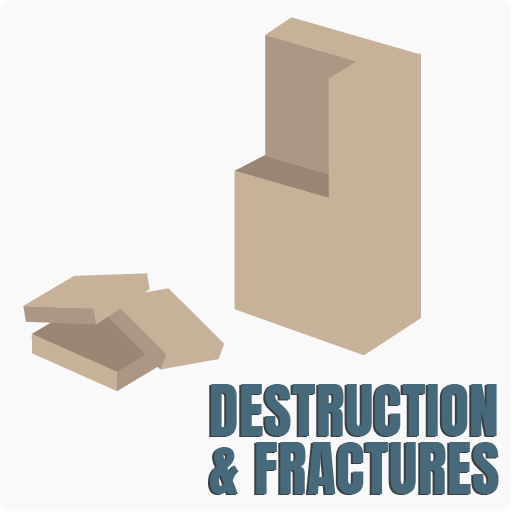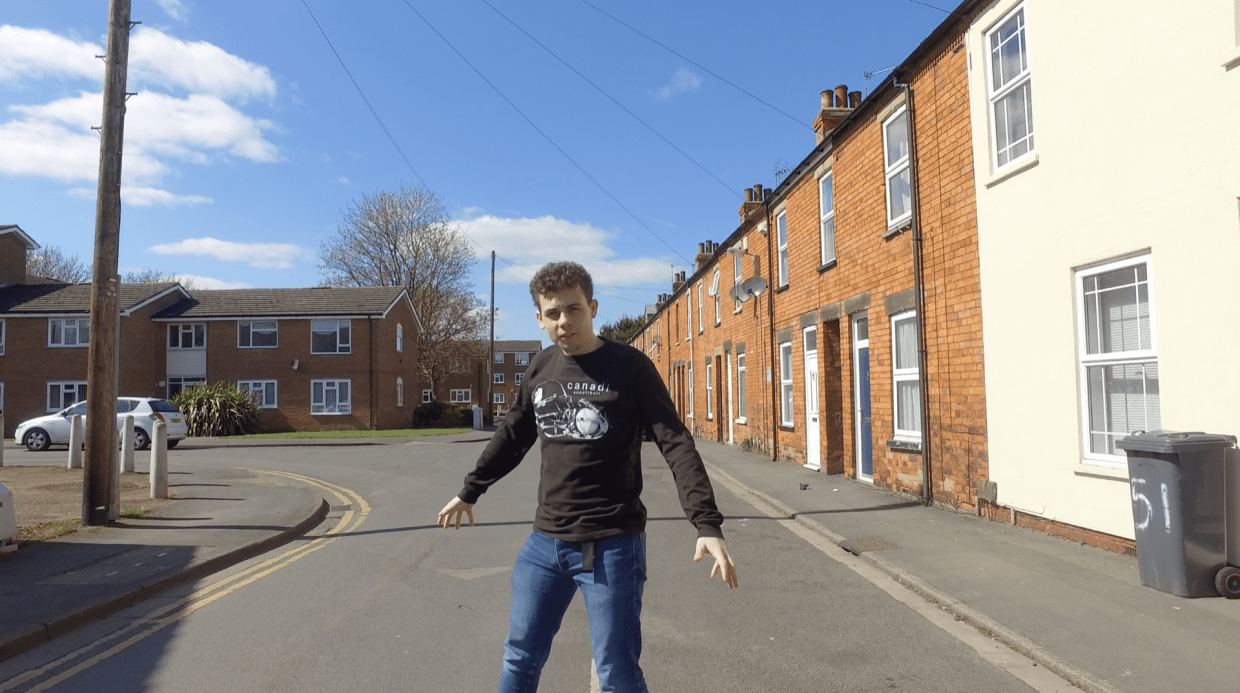Introduction
With all my preparation done I was ready to record some footage to be match moved. I had a few initial ideas for what I wanted my shots to be but I settled on some final choice before filming, I had already practiced the road explosion wide shot before hand, but I also decided I would incorporate some of the image base destruction and do a collapsing wall as well as some of the debris being lifted telekinetically and thrown to practice working further with fractured geometry. In addition to this I planned to film a few extra angles and other shots as backups incase my top three choices did not work or simply to work on at a later date.
THE Set
I filmed the footage in a backstreet in Lincoln in an attempt to minimise foot traffic and actual traffic as I knew I’d be filming in the road. The area needed to be wide and open with an area behind the curb to set up the camera far enough back to get a sufficiently wide frame. Conveniently there were many such areas around Lincoln so I had plenty of options. I settled on the area I did because of its lack of added shadows from surrounding objects. While I couldn’t remove them entirely I managed to reduce it to a wall (easily recreate-able via a blocker within Houdini) and a tree over to the far right.
The Camera
I filmed the footage on a DJI Osmo which I was not especially familiar with, however I found it a very enjoyable piece of kit to use. The wide angle of the lens gave me a sufficiently wide frame and the level of digital stabilisation provided by the Osmo’s gimble meant all my footage was incredibly smooth which was perfect when I came to matchmove the footage. The camera was not, however, without its drawbacks of course, the controls for moving the camera manually were quite sensitive and I was unable to use it without drawing attention to the camera motion. This resulted in me not being able to rotate the camera as quick as I would like in a couple of situations, however when compared to the pros of this camera, this was a pretty small con.
the shoot
On the day of shooting I took a number of precautions in order to make the production of my shots as smooth as possible. Firstly I took note of the lighting direction, while still obvious in my footage it was important practice to record the direction of the sun in relation to the set. In this case the footage was shot at around 2 in the afternoon meaning the sun was at an approximately 75° angle relative to the ground on was positioned directly behind the camera on the wide shot.
I also recorded a 360° image to use as an Environment Map. Using an Environment Map it is possible to light a scene living computer generated objects accurate light contributions from the set and sky without having to create them yourself. It is possible to generate real accurate HDRIs with expensive equipment and software, however Google’s Street View app allows you to take a 360° image including the top and bottom and even guides you through the process. I therefore downloaded the free app and saved my Environment Map to my phone.
Lastly I took some high resolution images of various materials on set that I would later use to texture my digital geometry with my DSLR. This included both a texture for the interior and exterior of the road. For the exterior I simply found a smooth section of road that had no anomaly’s, for the interior however I searched around for a section of the road with a large pothole, I took a number of images before finally settling on a relatively sizeable one that allowed me to just capture the interior texture. While similar, these textures allowed me to slightly differ the look of my pieces’ faces resulting in a more photoreal shot. I unfortunately did not capture an image of the bricks used in the final shot of the day, an oversight that could have potentially been costly, however using photoshop’s Perspective Crop tool I was able to isolate a section of the wall and create a flat texture from it easily despite shooting at an angle.
Final Rushes
I shot far more footage than I needed to for this project, even though I knew I would only have time to create 2 or 3 shots from the footage recorded I made sure I had extra for two reasons. Firstly if I was too ambitious with any of my ideas it was important to have backups, and secondly even though I did not use all the footage for this project specifically, it is useful to have a backlog of film to practice on.

